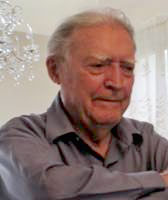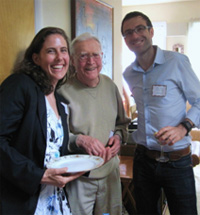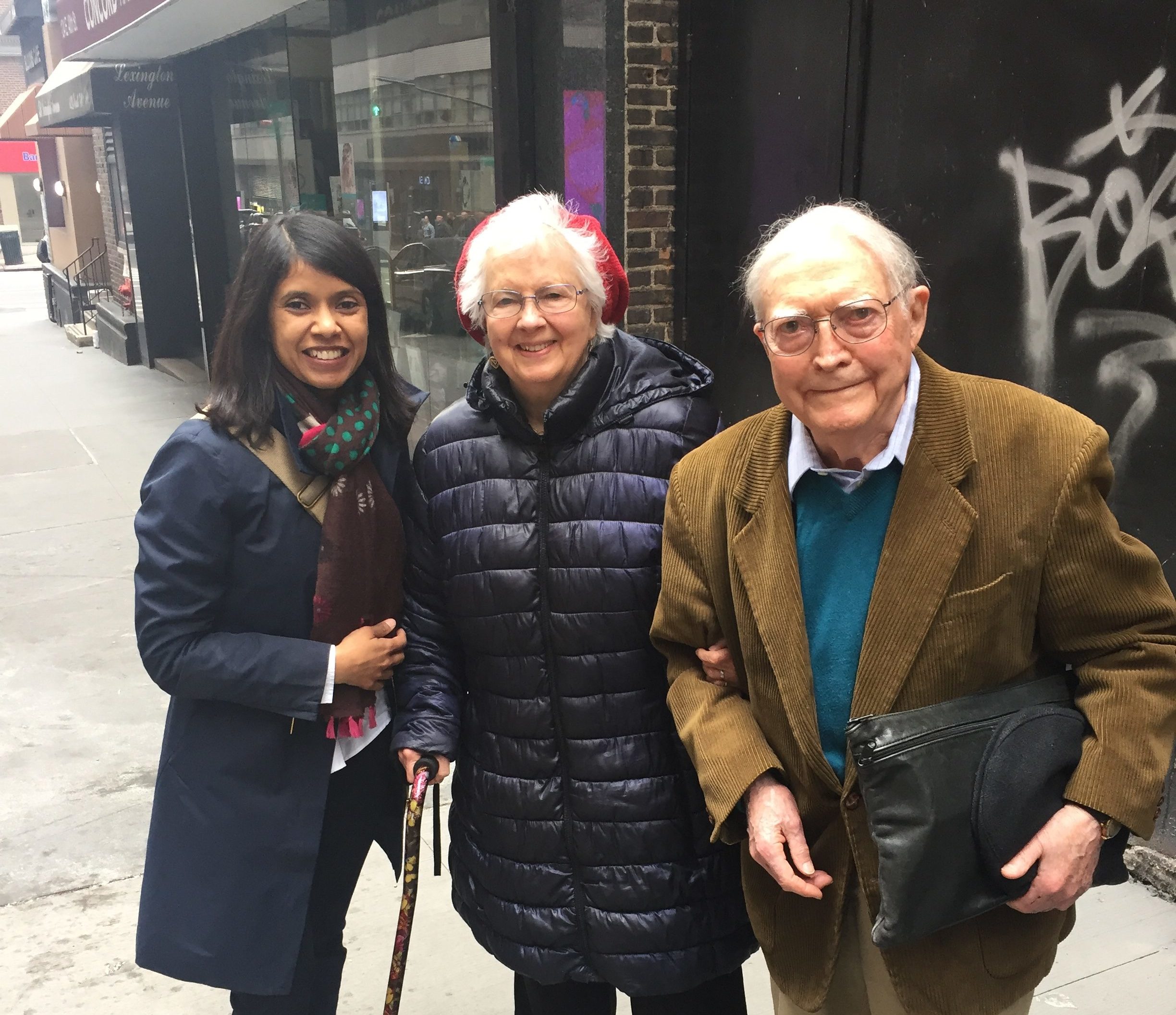About Jean
Le Mée

Jean Le Mée's interests ranged from Engineering Research,
Education and Design, to Sacred Architecture and Geometry,
to Sanskrit and the study of Grammar. He was Emeritus
Professor of Engineering at the Cooper Union for the
Advancement of Science and Art in New York City and was
retired from his work as Cooper Union's Chair of the
Department of Mechanical Engineering and Director of
Curriculum Development and Innovation. In retirement he
spent time in continued research and occasional lecturing.
Jean's studies began in France at the Ecole Nationale de la Marine Marchande. He graduated and was commissioned in the French navy as Enseigne de Vaisseau de Première Classe. He continued his education in the United States and received the degrees of Master of Science and Doctor of Philosophy at Carnegie-Mellon University in Pittsburgh, PA.
During his career at the Cooper Union Jean served as Project Director of the SHAPE Project (Synthesis of a Holistic Approach to Professional Education), a twenty-month study of a new approach to the education of engineers, as Project Coordinator of "Professional Competence Development in the Undergraduate Engineering Curriculum," a three-year project supported by the NSF, and as Governing Board Member and Institutional Activities Leader of the ten-year project of the NSF-the Gateway Engineering Education Coalition.

Jean with former Cooper Union students
Megan and Marcin
In 1993 Jean was invited by the State Technical
University of Leningrad to deliver a series of lectures on
Engineering Education in the United States and Europe.
Jean was Curator in 1991 of "A Better Mousetrap - Patents and the Process of Invention" an exhibition presented at the Cooper Union as a 200th birthday tribute to its founder, the inventor, Peter Cooper. This exhibition was sponsored by the General Motors Corporation and the American Heritage of Invention and Technology Magazine. In 1997 he curated another exhibition, "On the Motive Power of Fire," held at the Electrokinetics Gallery in New York and sponsored by the American Society of Mechanical Engineers and French Embassy in Washington, DC to celebrate the 200th anniversary of the birth of Sadi Carnot, the founder of thermodynamics and the 300th of Thomas Newcomen's experiments that led to the operation of the first industrial steam engine. Jean was also Co-Organizer of "Art and Mathematics 2000," an exhibition at the Cooper Union in collaboration with the International Society of Art, Mathematics and Architecture (ISAMA) and Organizer of "Fictional Engineering," an exhibition of drawings and sculptures by Stephen Talasnik at the Brooks Design Center at the Cooper Union in 2001.
Jean first studied Sanskrit at Columbia University. Subsequently he was a Visiting Senior Fellow (1978-79) at the South-East Asia Regional Studies Center of the University of Pennsylvania; a Fellow (1983-84) of the American Institute of Indian Studies in the Sanskrit Department of the University of Delhi; and a Faculty Fellow (1989-90) in the Institute for the Humanities of New York University. In 1994 he was invited to participate in the Academy of Consciousness at Princeton University (Princeton Engineering Anomalies Research Laboratory-PEAR).
 Jean's
interest in Sanskrit resulted in his translation into
English of twelve Hymns from the Rig-Veda, a volume first
published by Alfred A. Knopf in 1975 that included
original photographs by Ingbert Grüttner. In 2005 this
book was transformed into a quadrilingual edition with a
French translation by Jean himself, a German translation
by Volker Stutzer, and a Spanish translation by Gerardo
del Cerro. It was available as a paperback and in a
limited hardcover edition with pictures by Indian artist
Prem Raval through the Jain Publishing Company.
Jean's
interest in Sanskrit resulted in his translation into
English of twelve Hymns from the Rig-Veda, a volume first
published by Alfred A. Knopf in 1975 that included
original photographs by Ingbert Grüttner. In 2005 this
book was transformed into a quadrilingual edition with a
French translation by Jean himself, a German translation
by Volker Stutzer, and a Spanish translation by Gerardo
del Cerro. It was available as a paperback and in a
limited hardcover edition with pictures by Indian artist
Prem Raval through the Jain Publishing Company.
In 1999 Jean, in collaboration with Professor M. Báez and students at the Cooper Union, was invited to participate in the New York Time Magazine's Time Capsule Competition. Their entry, entitled "The Millennium Sphere or Ariadne's Clew," was a finalist and the project exhibited at the Museum of Natural History in New York City. A model of the "Millennium Sphere" was subsequently displayed in the nave of the Cathedral of St. John the Divine in New York. The complete catalogue and videos accompanying the project are presented elsewhere on this site.
 Companion
CompanionIn retirement Jean's principal research centered on the religious architecture of medieval Europe. Please click on Jean's complete Curriculum Vitae, for a comprehensive list of the articles he has wrote.
Jean lived in Northern New Jersey with his wife Katharine
and their faithful, furry, feline friend Shanta, a source
of support and interference without whom no really serious
work could be done.
A tribute from Shantala Sriramaiah
 About
two years ago, I chanced upon a wonderful translation of
a powerful hymn from the Ṛg Veda called Devī Sūktam –
a great example of the superb, clever and perfectly
rhythmic poetry of the Vedas. What struck me about this
translation while reading it was that it seemed to match
the “chandas” or
the
exact number of syllables of the original text in
Sanskrit. Incredible!
About
two years ago, I chanced upon a wonderful translation of
a powerful hymn from the Ṛg Veda called Devī Sūktam –
a great example of the superb, clever and perfectly
rhythmic poetry of the Vedas. What struck me about this
translation while reading it was that it seemed to match
the “chandas” or
the
exact number of syllables of the original text in
Sanskrit. Incredible!
I couldn’t stop myself from investigating who the
translator was, which was easy enough thanks to google!
The email I sent him that day was my first exchange with
the amazing Jean Le Mée,
author of the book Hymns from the Rig-Veda.
Jean and I eventually formed a lovely friendship and I
was able to meet him and his wife Katherine last
year
while on a trip to the US.
Unfortunately he passed away on the 28th of June 2020.
Throughout the lockdown period, I called him every
evening at 8PM Brussels time, when the customary
applause for our health care workers was taking place.
It was my daily alarm to call Jean and chant various
hymns he would request each day.
Jean
had such a brilliant mind, such clarity and a love for
Sanskrit and the Vedas that for him was a natural part
of being an Engineer. He said of his work that in
presenting just a few hymns in his book, less than
one-hundredth of the whole of the Ṛg Veda – was simply to make
available a sampling of its profundity and splendour.
But as a translator, he was painfully aware that this
was like trying to convey the rich texture of a symphony
by hesitantly whistling its theme.
I
thank all my friends and our student community who
joined me on 19th July, Sunday morning, so I could share
this tribute to my friend Jean Le Mée.
My
very special thanks also to his wife, Katherine Le Mée.
Here’s
the replay of
the
online tribute.
Jean Le Mée tribute from Veda Studies on Vimeo.

